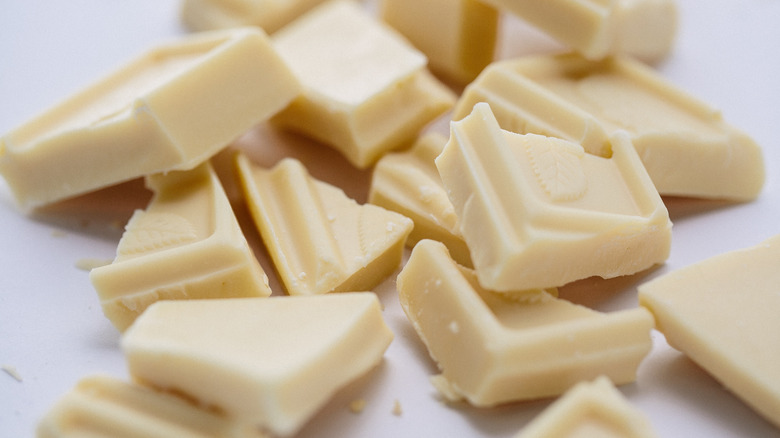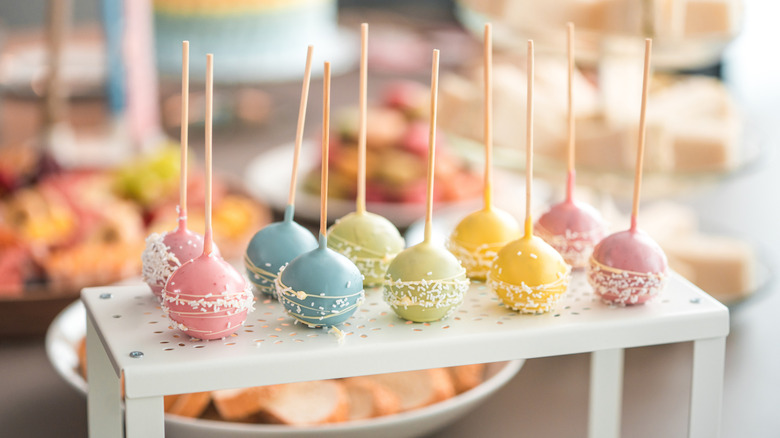The White Chocolate Substitution Mistake You Don't Want To Make
They are one of the first things television baking show contestants grab when the host yells, "Go!" There they are on the shelf next to the fondant and the modeling chocolate — those rainbow-hued disks known as candy melts. The small wafers look like white chocolate tinged with a bit of food coloring, and are great for creating wild designs and social media-worthy cake pops, cake toppers, and decorated cookies. But don't mistake candy melts for white chocolate — or any other chocolate, for that matter. If you select white candy melts as a replacement for white chocolate, you'll end up with something quite different in color, texture, and taste.
Candy melts and white chocolate have one key difference: cocoa butter. White chocolate has it and candy melts don't. Instead, candy melts are made primarily of sugar and vegetable oil, along with some milk solids and seasonal flavoring. Some of the confusion might be because white chocolate was not considered chocolate by the U.S. Food and Drug Administration (FDA) until 2002, when the FDA gave it a standard of identity. Before then, white chocolate was called white confectionary coating or confectionary coating. Under the new rules, white chocolate must have "... a minimum of 20% cocoa butter, a minimum of 14% of total milk solids, a minimum of 3.5% milkfat, and a maximum of 55% nutritive carbohydrate sweeteners," according to the FDA. White chocolate does not contain cocoa solids, the substance in cocoa beans that gives chocolate its brown color and slightly bitter taste.
Candy melts are easy to melt but have a waxy texture
Cocoa butter gives white chocolate a smoother, silkier texture than candy melts, and white chocolate has a tendency to melt in your mouth. It has a sweet, buttery taste and retains that creaminess even when tempered –- a process of heating and cooling that gives chocolate a smooth, glossy finish.
The vegetable oil in candy melts allows them to liquefy easily in a microwave, bain-marie, or double boiler, and to do so more consistently. The trade-off is a waxy feel and bland taste sometimes enhanced by artificial flavoring. Still, candy melts are also less expensive than white chocolate and can take on more brilliant colors.
If you substitute candy melts for white chocolate, keep in mind they can get thick and clumpy if you rush through the melting process. If using a microwave, melt them on a low power for one minute and then check them every 30 seconds until they are mostly melted. To thin out candy melts for a smoother texture, add a neutral oil like vegetable or coconut oil or even shortening. Just as you would when melting chocolate, do not add water. The melted candy will seize –- or solidify –- into grainy globs that will not smooth out again. You can also use Wilton's EZ Thin Dipping Aid, made especially to get the nice silky texture you see on all those baking shows.

